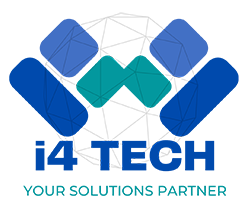How Edge Computing Transforms Data Processing in IoT Environments

As the world becomes increasingly connected through Internet of Things (IoT) devices—smartphones, wearables, smart factories, autonomous vehicles, and more—businesses are facing a new data challenge: how to efficiently process massive amounts of data generated at the edge of networks.
Enter Edge Computing—a game-changing technology that brings computation and data storage closer to the source of data generation. Instead of sending all data to a centralized cloud or data center, edge computing processes data locally or near the device, reducing latency, improving performance, and enabling real-time insights.
In IoT environments, edge computing isn’t just helpful—it’s essential.
⚙️ What Is Edge Computing?
Edge computing is a distributed computing model that processes data at or near the physical location where it’s created, rather than relying solely on a centralized data center or cloud.
For example, instead of sending video footage from a security camera to the cloud for analysis, edge computing allows that footage to be processed locally, right on the camera or an on-site gateway device.
📶 Why Edge Computing Is Critical for IoT
✅ 1. Reduced Latency
IoT applications—such as self-driving cars, industrial robotics, and smart healthcare devices—require real-time or near-real-time data processing. Edge computing allows this by eliminating delays caused by sending data back and forth to the cloud.
✅ 2. Bandwidth Optimization
Sending all IoT data to the cloud can strain network bandwidth. Edge computing filters and processes data locally, sending only relevant or summarized insights to the cloud—saving bandwidth and reducing costs.
✅ 3. Improved Reliability
With edge computing, IoT systems can continue functioning even when internet connectivity is lost. This is especially important in remote areas, industrial sites, or disaster zones.
✅ 4. Enhanced Security and Compliance
By keeping sensitive data closer to its source, edge computing reduces the risk of interception during transmission and makes it easier to comply with data protection regulations like GDPR or NDPR.
✅ 5. Scalability
As the number of IoT devices explodes, central cloud systems can get overwhelmed. Edge computing distributes the processing load across devices, making it easier to scale up IoT deployments.
🧠 Real-World Use Cases
- Smart Manufacturing: Edge-enabled sensors monitor equipment in real-time to predict failures and optimize performance without needing constant cloud interaction.
- Autonomous Vehicles: Cars make split-second driving decisions based on real-time data processed at the edge.
- Healthcare Devices: Wearables and remote monitors analyze health data locally to alert patients and doctors immediately.
- Retail: Smart shelves and cameras process foot traffic and inventory data on-site for instant operational adjustments.
- Energy and Utilities: Edge systems in smart grids detect outages or optimize energy use without delay.
🛠️ Key Components of Edge Computing in IoT
- Edge Devices – Sensors, cameras, or embedded systems that collect data
- Edge Gateways – Intermediate devices that aggregate and process data before it’s sent to the cloud
- Edge Servers or Micro Data Centers – On-site processing hubs for more complex analysis
- Edge AI – Machine learning models running on edge devices for real-time decision-making
- Cloud Integration – For long-term storage, analytics, and cross-device coordination
⚠️ Challenges to Consider
- Device management – Updating and securing thousands of edge devices requires strong coordination
- Data consistency – Ensuring data is synchronized between edge and cloud
- Limited computing power – Edge devices may have resource constraints
- Security – While edge enhances privacy, it also expands the attack surface if not managed properly
🤝 How i4 Tech Integrated Services Can Help
At i4 Tech Integrated Services, we help businesses design and implement scalable, secure, and intelligent edge computing systems for IoT environments. Our offerings include:
- IoT and edge architecture planning
- Edge device integration and deployment
- AI and real-time analytics at the edge
- Secure data processing and transmission
- Cloud-to-edge data syncing and monitoring

